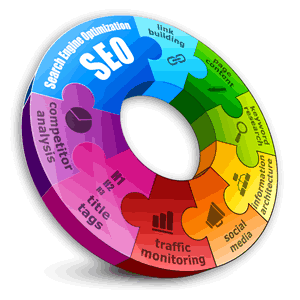 The process of using social networking sites to increase traffic is known as onsite social optimization, in others words: where social media marketing – partially – meets search engine optimization.
The process of using social networking sites to increase traffic is known as onsite social optimization, in others words: where social media marketing – partially – meets search engine optimization.
Earlier this year, Gigya published a report called “Social is the Next Search”. Discover some key takeaways to grow social traffic. An online business that employs different strategies, such as live chats, to drive social participation by users on its website is said to be on the right track to make its onsite social optimization process a success.
An introduction and three steps to follow.
A socially optimized website can enjoy the following benefits:
- More users who register using a social network identity
- Increased amount of content and activity shared with social networks
- A huge network of friends
- More time spent on the site
Successful onsite social optimization increases the traffic to a site from social networks which in turn may boost online sales revenue and improve search engine rankings. So, the importance of socially- referred traffic is well established. But how will you do it and succeed in social media optimization in general?
Well, there are three steps to generating social traffic, each step corresponding to a major component of an effective onsite social optimization strategy.
Step 1: Start with Social Connectivity
The first step to develop and implement an effective onsite social optimization strategy is to connect your site to major social networking sites.
All major search engines and social networks provide APIs (Application Programming Interface) to enable online businesses to integrate with them directly. These mechanisms are data structures allowing websites to get information from and send data to a social network.
To make the most of this opportunity, a business can connect itself to APIs provided by Facebook (Facebook Connect), Twitter, LinkedIn, Google, Yahoo, MySpace, and many others. Although Facebook Connect is the most prominent service in this area, multiple social network connectivity will definitely increase the number of users participating in a particular website.
However, there is one important point that needs consideration. Since each API has different integration requirements and different core features, special expertise and resources are required to integrate multiple social network APIs.
In addition, in-house experts would be needed, as most API providers do not offer any dedicated support. Also, an online company needs to devote time to manage APIs as they tend to get updated quite frequently. If these challenges are tackled properly, an online business can make the most of such networking sites to bring in more relevant traffic.
Step 2: Improve the Connected Experience
Once a site is connected to major social networking sites, it must offer a great experience to the visitors.
By enriching the ‘connected experience’ of the visitors, a site can enjoy maximum socially connected participation. The quality and quantity of the content and activities of the site that is shared by users determine the extent of social participation on the site.
The objectives behind optimizing a site for socially-referred traffic are:
- Enabling online users to register with their social network identities; this means there is no need to have separate systems for registration, sharing, commenting, and other social activities.
- Encouraging them to share a website’s content with their social networks
- Allowing them to interact with their friends or online communities while on the website. This is possible with the help of new APIs that allow a user to share content without leaving the page, thus eliminating the risk of the user not returning to the site.
Besides, a well optimized site also removes unnecessary clicks from the sharing process by incorporating the process of sharing into the overall activity. So, you’ll not find a separate “share” button for the users on such sites.
Also, enabling users to share the site’s content with their friends on multiple networks at the same time can significantly increase the social participation of visitors involving the site’s content.
Step 3: Make use of Advanced Social Analytics
Unless you assess the results of your strategies, there is no way you can suggest improvements in the same.
This applies even in case of onsite social optimization. Measuring the effectiveness of connected experience of users by observing the socially-referred traffic, social registration and engagement will help an online business incorporate necessary changes.
Tracking of socially referred traffic will involve changes in monthly and yearly growth in socially-referred traffic overall as well as site wise, percent mix of referral traffic by users sharing content from the website, average number of completed messages or status updates for each connected user, average number of referred visits per shared item, degree of interaction and engagement with social features, and also the specific site content and activities generating the maximum sharing activity
These three steps, if followed seriously, will allow on online business to maximize social participation as well as the return on investment in their social site experience, according to Gigya.
Top image purchased under license from Shutterstock

